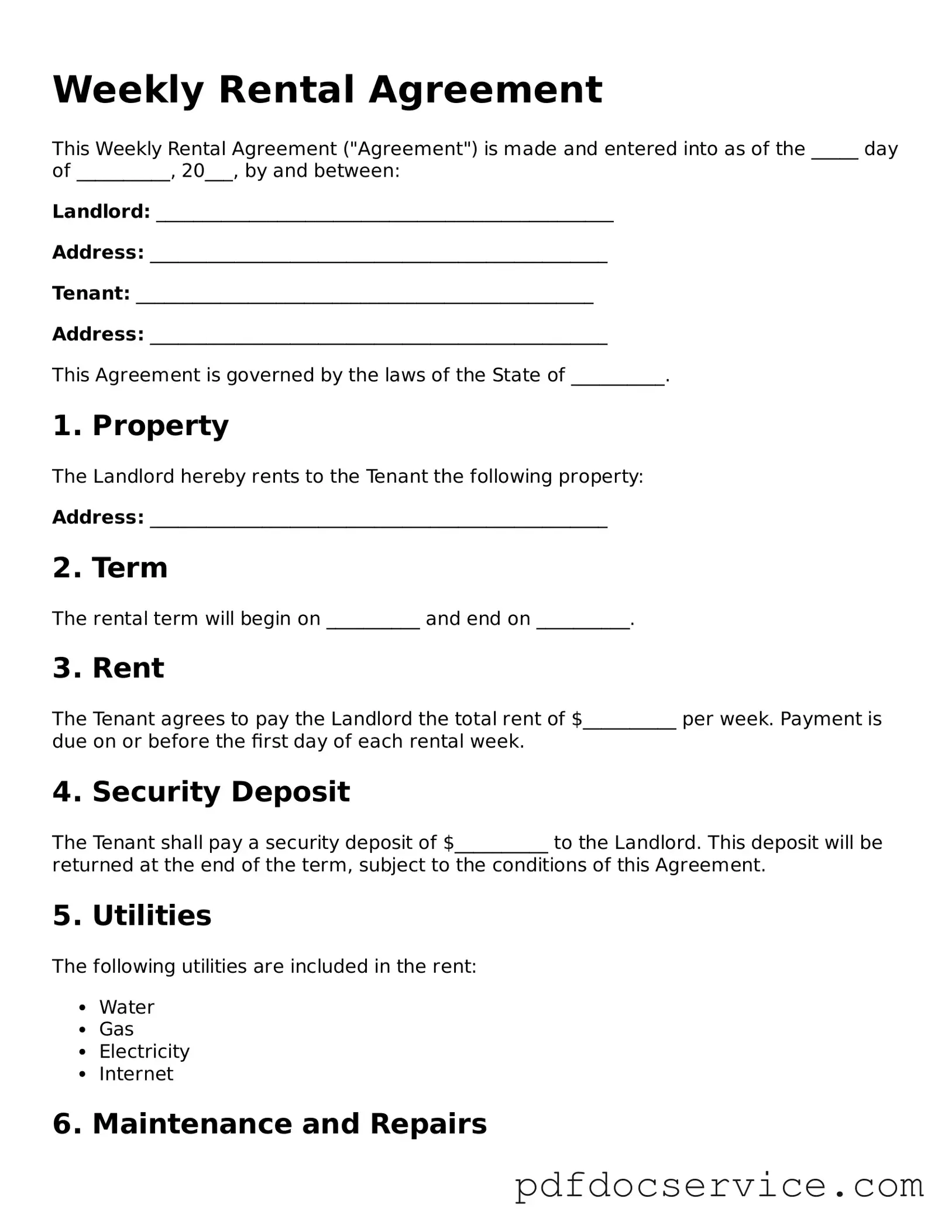What is a Weekly Rental Agreement?
A Weekly Rental Agreement is a legal document that outlines the terms and conditions under which a property is rented on a weekly basis. This agreement typically includes details such as the rental amount, duration of the lease, responsibilities of both the landlord and tenant, and rules regarding the property. It serves to protect the interests of both parties and provides a clear framework for the rental arrangement.
Who should use a Weekly Rental Agreement?
This type of agreement is ideal for landlords who rent out properties on a short-term basis, such as vacation rentals or temporary housing. Tenants looking for flexible living arrangements may also benefit from this agreement. It is particularly useful in situations where the rental period is less than a month, allowing both parties to establish clear expectations.
What key elements should be included in the agreement?
A comprehensive Weekly Rental Agreement should include the following key elements:
-
Property Details:
Address and description of the rental property.
-
Rental Amount:
The weekly rent amount and payment due dates.
-
Duration:
Start and end dates of the rental period.
-
Security Deposit:
Information regarding any required deposits.
-
Responsibilities:
Duties of both the landlord and tenant, including maintenance and repairs.
-
Rules and Regulations:
Any specific rules regarding the use of the property.
How is the rental payment typically structured?
In a Weekly Rental Agreement, the rental payment is usually structured as a fixed amount due at the beginning of each week. Some landlords may require payment in advance for the entire rental period, while others may allow weekly payments. It is essential for both parties to agree on the payment schedule and method, whether it be cash, check, or electronic transfer.
Can the agreement be terminated early?
Yes, a Weekly Rental Agreement can often be terminated early, but the specific conditions for termination should be clearly outlined in the document. Both parties should understand the notice period required for termination and any penalties that may apply. It is advisable to include clauses that address early termination to avoid disputes.
What happens if there is a dispute between the landlord and tenant?
In the event of a dispute, the Weekly Rental Agreement should provide a mechanism for resolution. This may include mediation or arbitration processes. Both parties are encouraged to communicate openly and seek a mutually agreeable solution. If necessary, legal action may be taken, but this should be a last resort. Keeping a copy of the signed agreement can help clarify terms and conditions during disputes.
Is it necessary to have the agreement notarized?
While notarization is not typically required for a Weekly Rental Agreement, it can add an extra layer of protection for both parties. Having the agreement notarized can help verify the identities of the signatories and may be beneficial in case of legal disputes. However, in many cases, a signed agreement between the landlord and tenant is sufficient.
